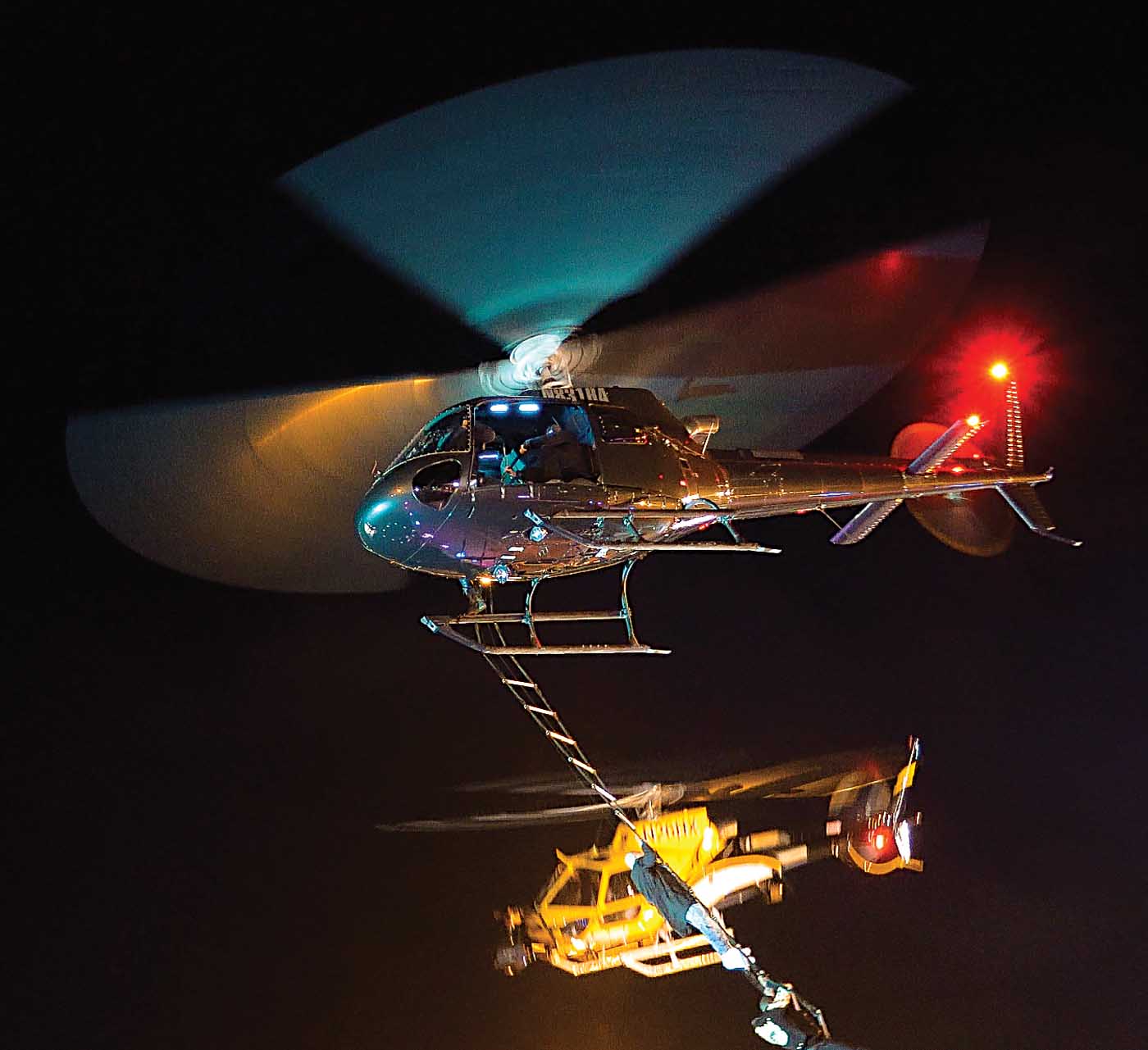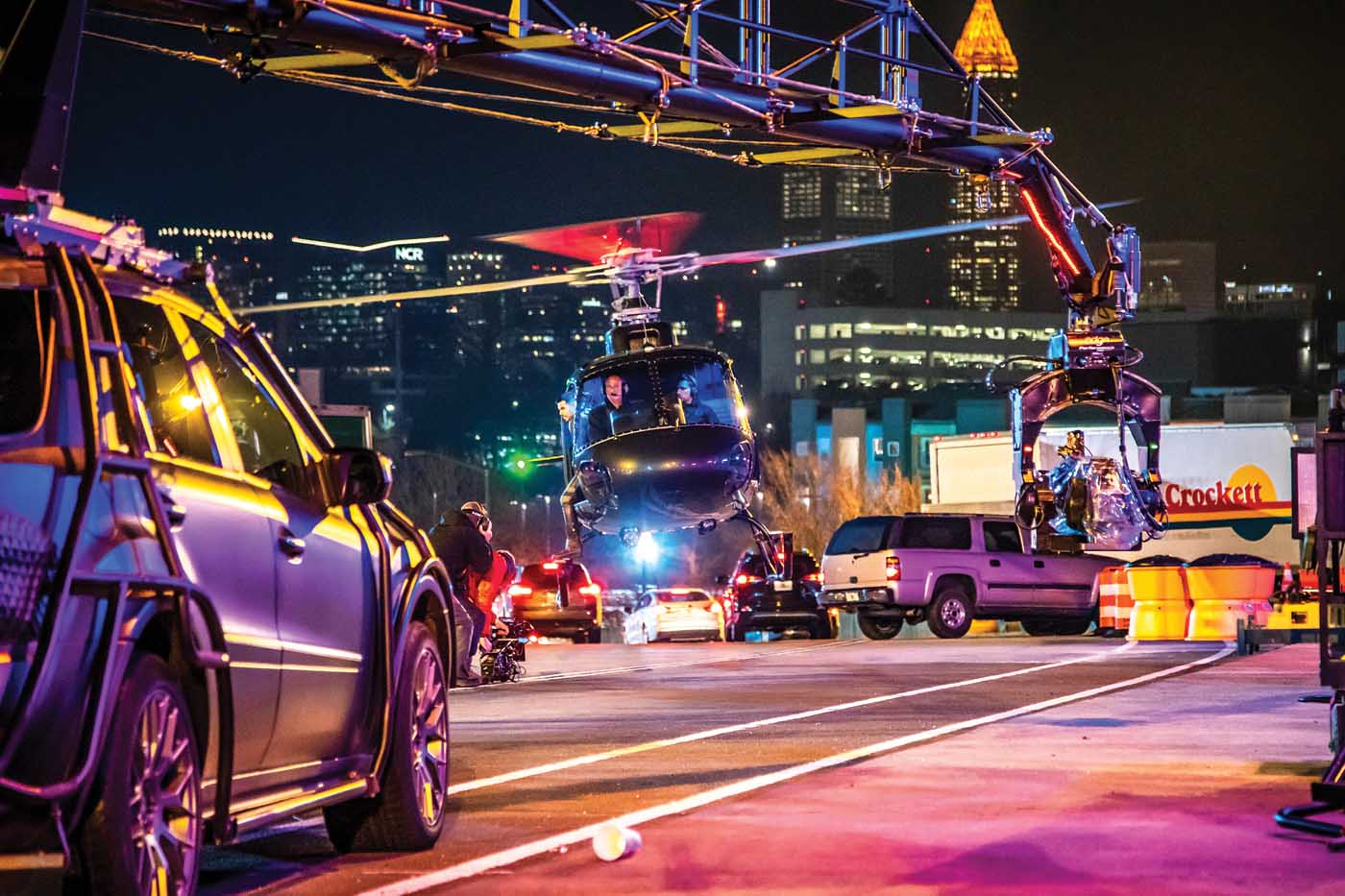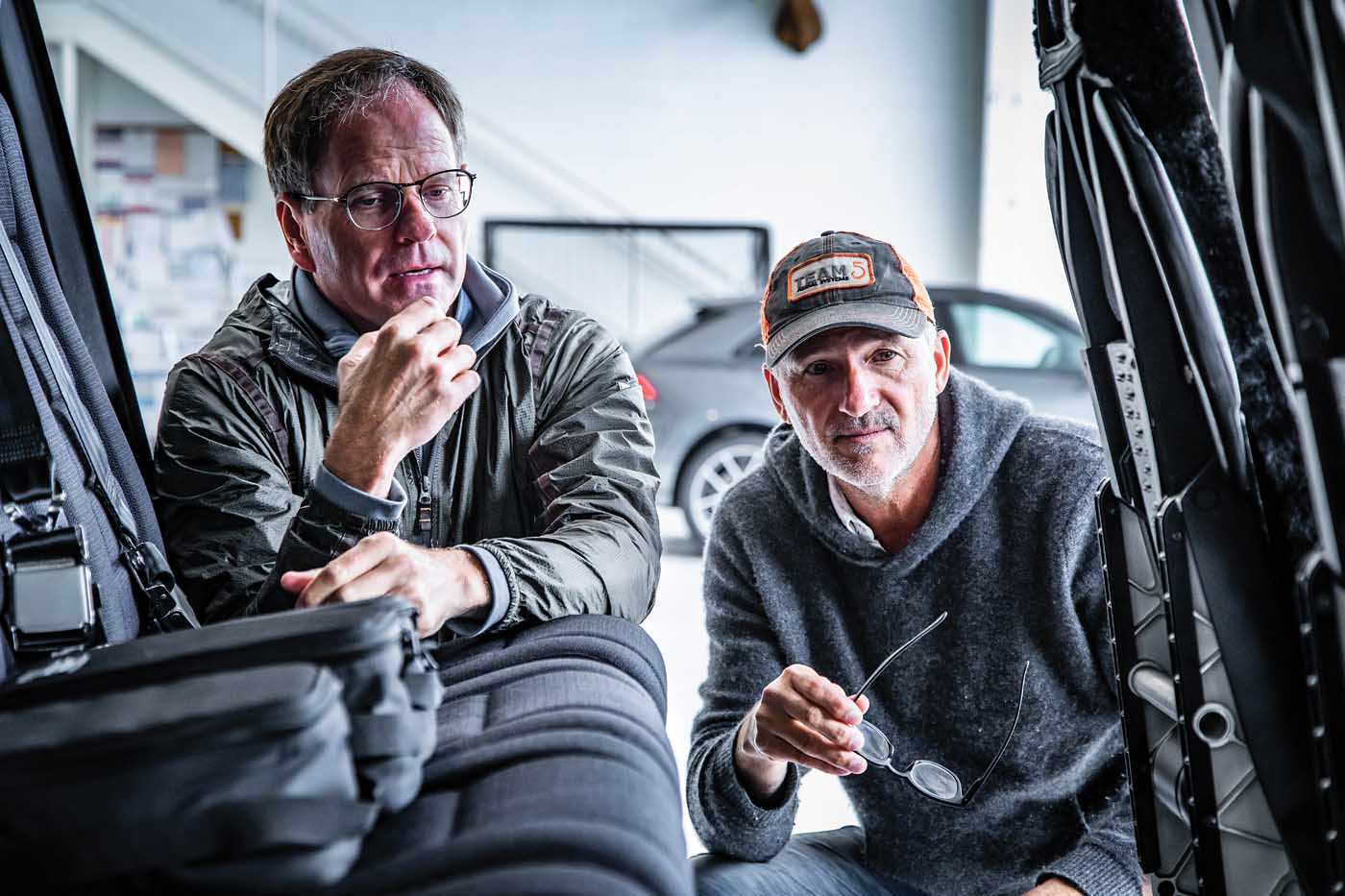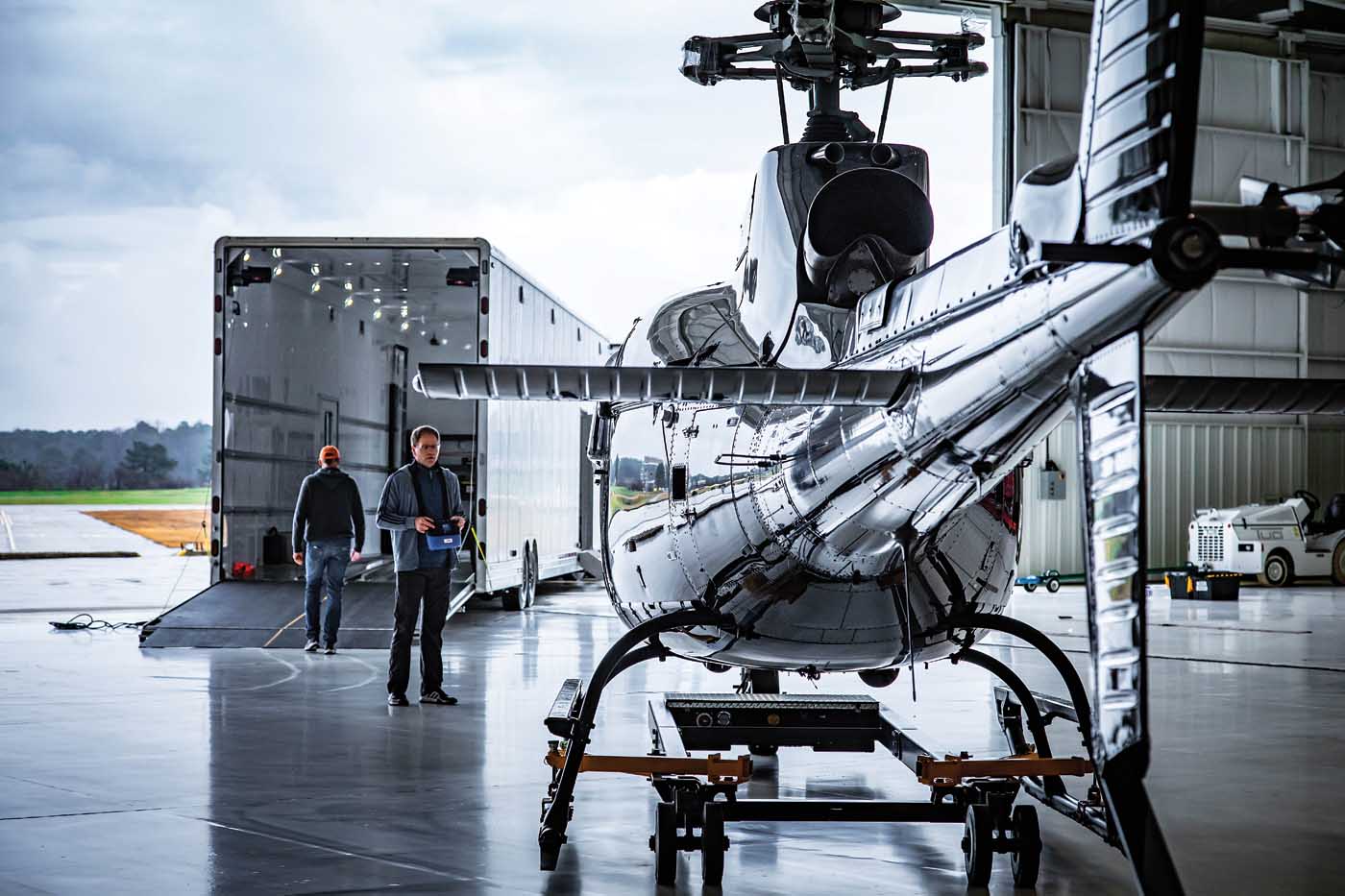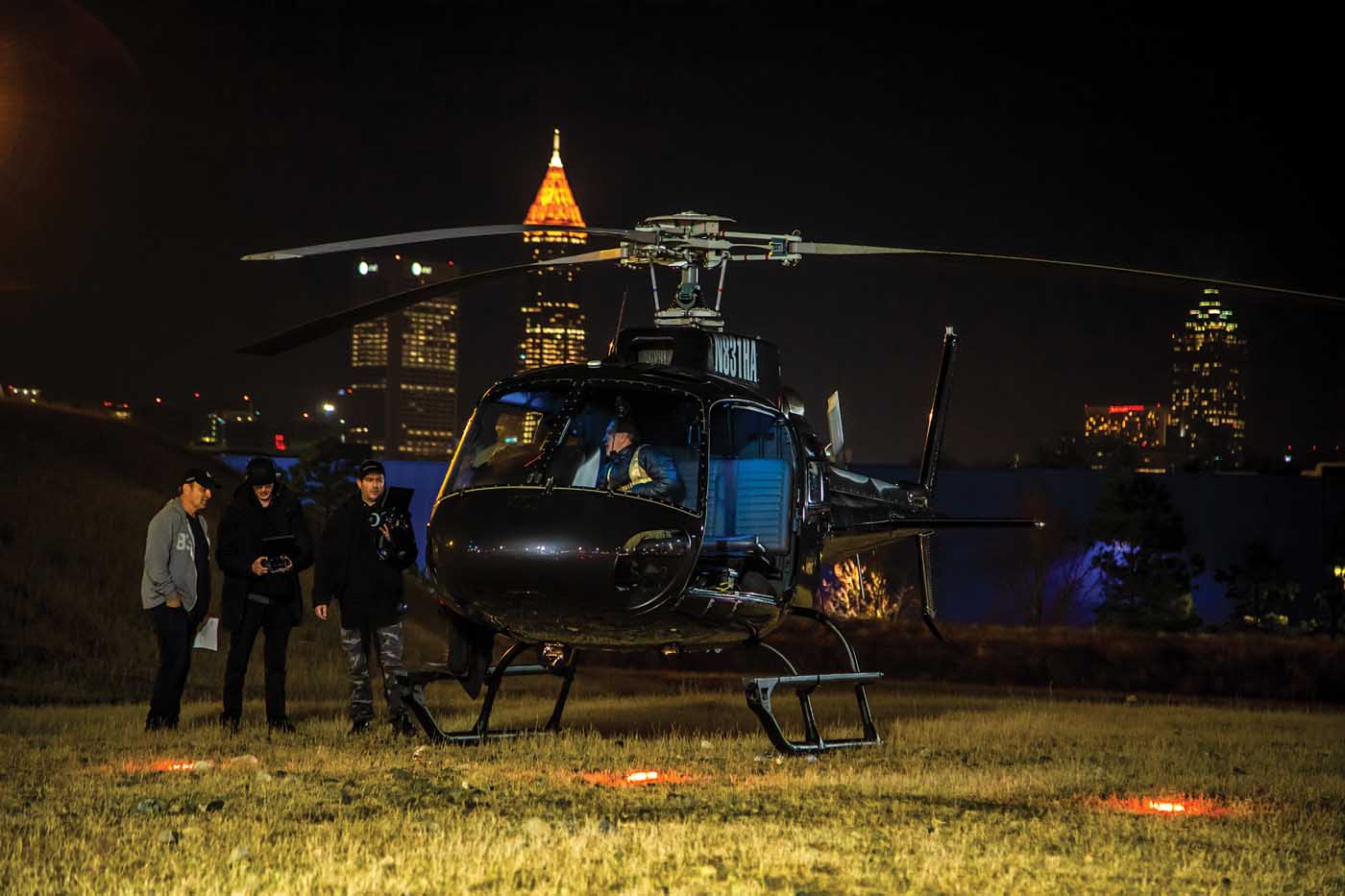On a cold, sparkling clear night in Atlanta, Georgia, pilot Fred North lifted off from a vacant lot. Suspended beneath the open door of his Airbus AS350 AStar helicopter was a rope ladder, and on it a stuntman wearing jeans and a black jacket, plus an inconspicuous safety tether.
Smoothly, North flew the aircraft to a nearby bridge, where he hovered next to a flatbed semi truck loaded with dummy propane bottles. North’s colleague Ben Skorstad, piloting an AStar camera ship, lifted at the same time and assumed a position overhead. Up and down the bridge, ordinary stunt cars with Florida plates waited for their signal.
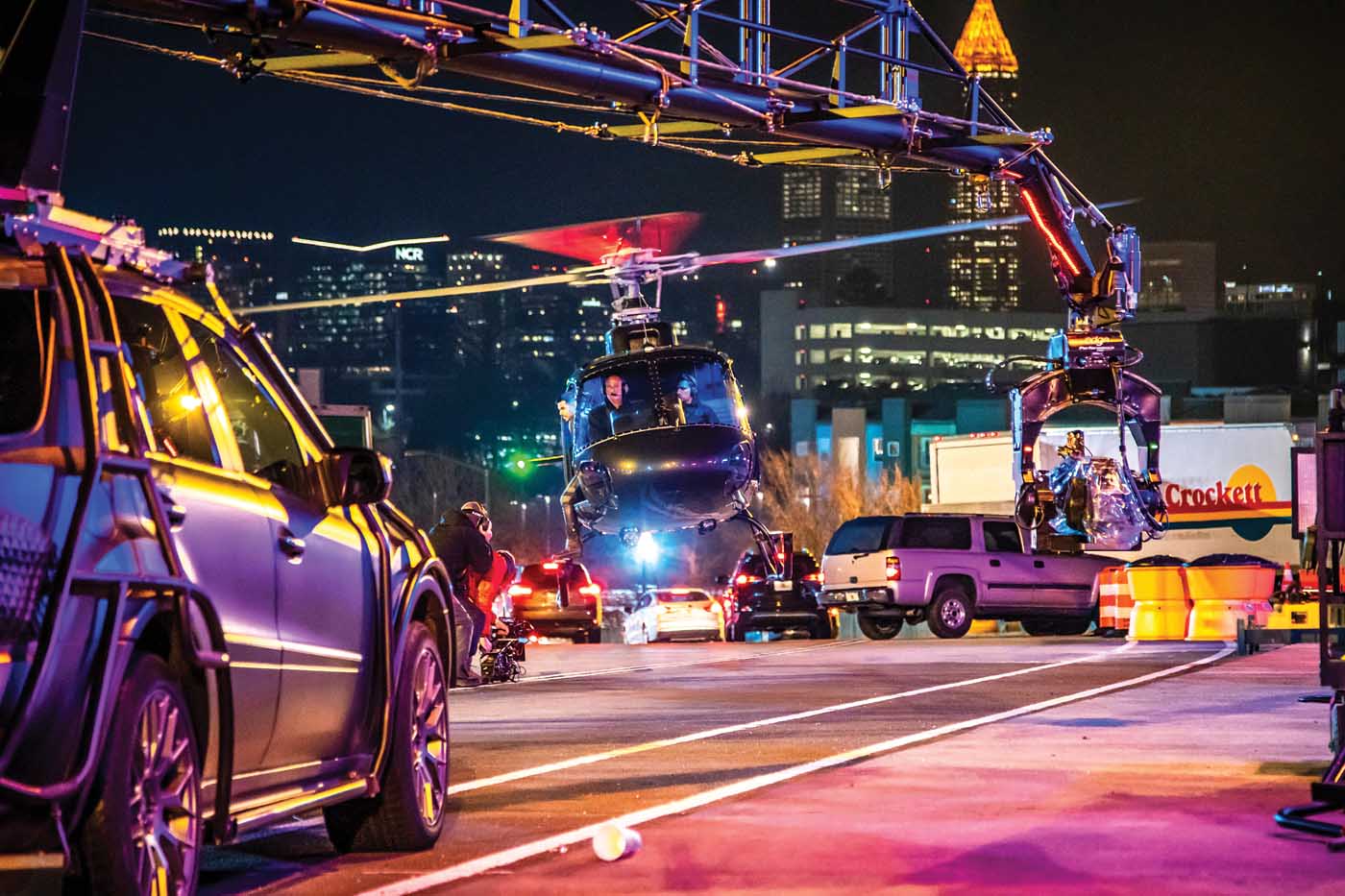
When the signal came, the cars began rolling, simulating a Miami street scene. On the flatbed, another stuntman started running toward the helicopter, explosions triggering behind him. Just as he leapt from the truck, North deftly swung the ladder with its other stuntman away from him, as Skorstad circled around the scene to capture the action.
Eventually, this would become the pulse-pounding sequence in Bad Boys for Life in which Detective Mike Lowrey — the character played by Will Smith — narrowly grabs the ladder with one hand. But not yet. Instead, the stuntman wearing Lowrey’s distinctive motorcycle jacket tumbled according to plan into a stack of empty cardboard boxes. North landed delicately with his human external cargo, and the scene was reset to shoot again — and again, and again.
This is what an action movie looks like behind the scenes, with each dynamic, fast-moving sequence painstakingly assembled piece by explosive piece. And shooting is only part of it. Creating this fleeting sequence for the third Bad Boys installment took months of planning and prep work, with North involved at every step of the way.
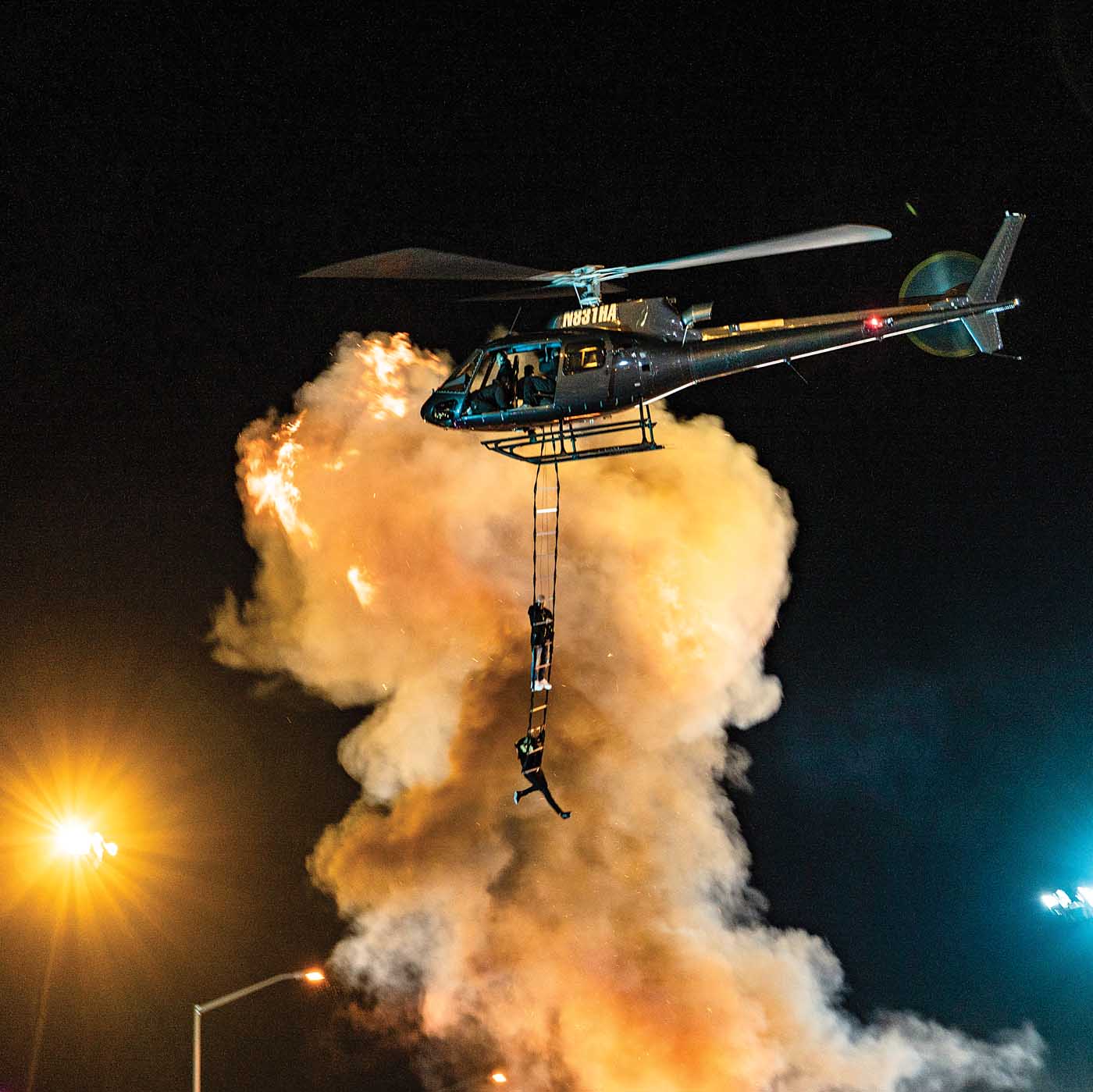
“For a big stunt flying like [this], it’s about two months’ prep,” North explained. In densely populated downtown areas, he noted, the additional work needed to line up city and Federal Aviation Administration (FAA) permits can double that timeline.
North may be the most sought-after pilot in Hollywood today, recognized both in the industry and, increasingly, on Instagram for his work in bringing blockbuster movies to life. “The thing about Fred, it’s amazing how he dances with the helicopter,” filmmaker Michael Bay told Vertical. “He’s so safe, and he knows where to put the camera, and we just have such a great working relationship — he knows what I’m looking for.”
But while North is commonly admired for his ability as a pilot — routinely maneuvering his helicopter between buildings, underneath bridges, and through narrow mountain passes — his fans don’t always understand the meticulous planning and risk reduction that goes into every shot. Neither do his fellow helicopter pilots always appreciate the artistry of his work, which requires not just skillful flying, but also a trained eye and underlying passion for cinema.
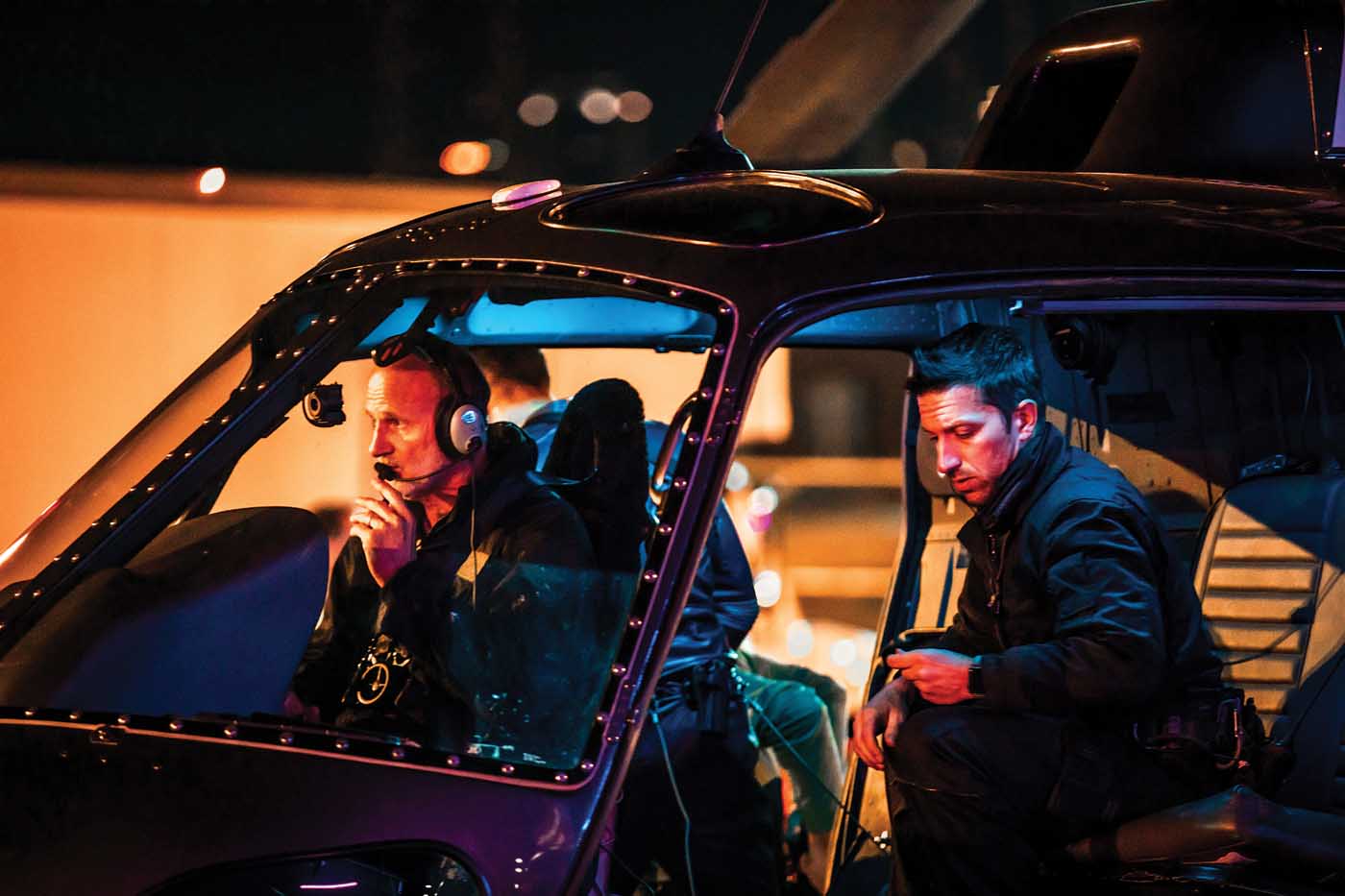
North may have a cool job — the coolest, some would say — but top-tier Hollywood filmmaking involves more than just glamour. “Most of the pilots that want to do that ‘risky business,’ they don’t necessarily see the foundation that you need to be that person,” North said. “It’s a long process.”
The path to Hollywood
For North — a native of France who now lives in the Los Angeles area — that process started as a grunt in the French Army, when, like many would-be pilots, he realized that aviators had the better end of the deal. “When I was walking and in snow and it was pretty horrible, I’d see those guys up there and I said that’s what I want to do,” he recalled.
Upon leaving the Army, North trained as a civilian helicopter pilot in Paris on the Bell 47, which he then flew for more than 1,000 hours giving tours. From there, he moved into utility and rescue work in the French Alps, flying Aérospatiale SA 315B Lamas and AStars (or Écureuils, as they are known in their native country).
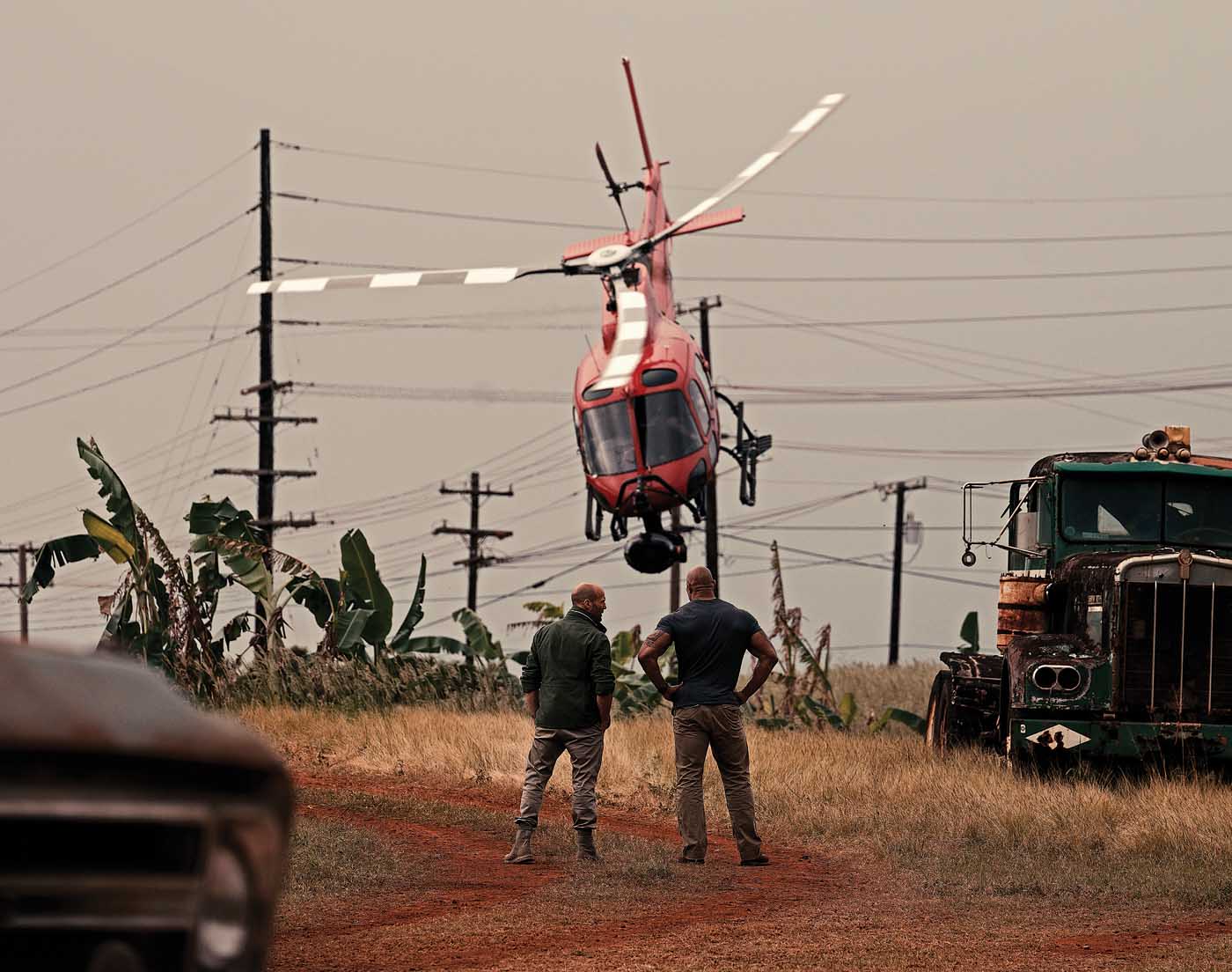
That challenging, technical, high-altitude work honed skills that would later become critical to his success as a film pilot, he explained. To do what he does today, “you need to be one with the aircraft,” he said. “So whatever they want you to do, you can physically, mechanically do it with the aircraft.”
Flying in the utility environment also prepared him for the dynamic, unpredictable nature of film work, which often takes place in the farthest-flung corners of the world. To thrive on chaotic movie sets, a pilot must have the mentality of a bush pilot, not an airline captain, according to North. “You fly with your guts, your instincts, you make decisions on the spot. It’s not too much about numbers . . . ‘Can I make it?’ You have to know.”
From there, North moved into his first camera flying work, covering offroad races like the Paris-Dakar Rally for television. “That was eight, nine months out of the year on an AStar, with the cameraman in the back of the AStar, the sliding door open, and the cameraman with a camera on his shoulder — and then you’re just [flying] sideways from France to South Africa,” he said. Especially in the days before cell phones and GPS, “the logistics were a nightmare,” he recalled.
North loved the challenge and energy of flying mere feet from the race cars, but eventually the job became creatively stifling. The producers he was working with weren’t particularly interested in how North and his camera operators captured their footage, “they just [needed] the event,” he said. When he learned that movie pilots played a more integral role in the creative process, he decided to make the switch.
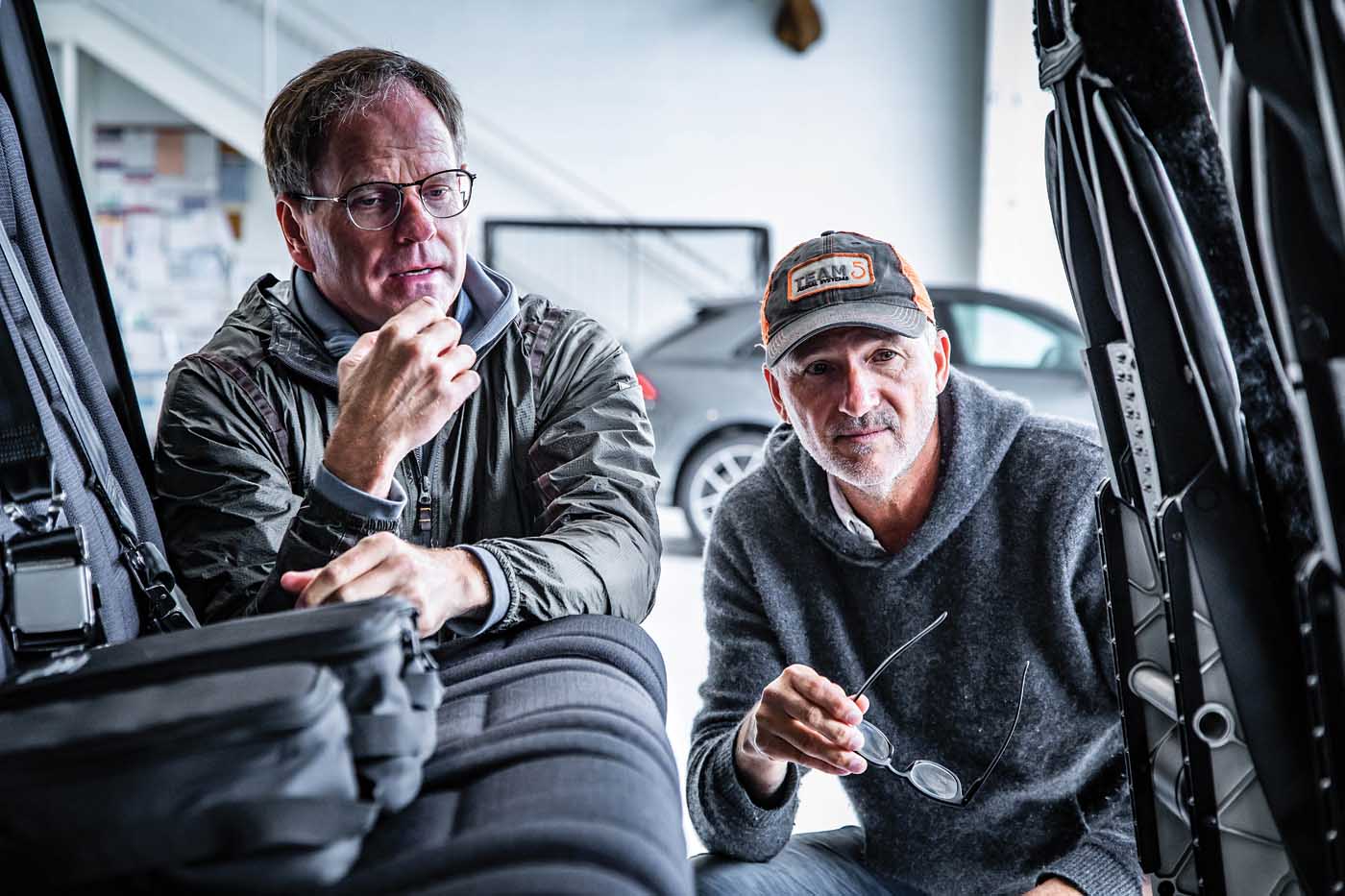
The problem was that movie flying was as hard to break into then as it is today. So North, who was still based in France at that point, found a workaround. Rather than peddle his skills as a pilot, he invested in aerial camera equipment — something that Hollywood productions shooting overseas frequently needed. “Then I was renting my camera equipment with the pilot,” he explained. “So if they wanted my camera system, then they needed John Doe here, and that’s kind of how I started in the business.”
More than just flying
Spiro Razatos is a former stuntman who today is one of Hollywood’s best-known stunt coordinators and second unit directors. He has worked with North on a number of blockbusters, including the Fast and Furious series, Captain America: The Winter Soldier, Kong: Skull Island, and recently Bad Boys For Life, where he oversaw the complex helicopter and rope ladder sequence that was shot in Atlanta.
“The thing is, it’s one thing to have a great pilot, but if the pilot doesn’t understand filmmaking, it’s all the difference in the world,” Razatos told Vertical. “You can have a great pilot who can go low [or] go fast, but if he doesn’t understand how to get the shot, that doesn’t mean anything.”

For North, his instinct for getting the shot is grounded in his longstanding interest in cinema. “I’ve always been in love with movies in general,” he acknowledged. However, becoming really skillful at the work took years of study, practice, and trial-and-error.
“It took me a few years to understand the concept of the energy, the awareness of space,” he said. “You need to occupy the space with energy [and] the story has to be shown in three or four seconds, so how [do] you do that? The director is not going to tell you how to do that — you have to come up with the solution. He’s just going to tell you what he wants.”
Moreover, he added, the learning process never ends. “Even [now] when I need to do a complicated air-to-air sequence, I watch my competition’s work. I try to learn from it, I see how they did it, what can I do better?” he said. “I do my homework.”

He also does the legwork. His preparation for a complex stunt sequence begins with a ground scout of the location to evaluate obstacles and other hazards. For the shoot in Atlanta, for example, he identified several streetlights that needed to be removed to allow him safe access to the bridge.
Once the production and the host city mutually confirm which areas will be closed for shooting, North and his team prepare elaborate maps to guide the aerial work. “I put on the maps all the flight paths, the altitudes, and what I need from production,” he said, noting that these maps are part of the package he submits to the FAA or other regulatory authority. A representative from the regulator will usually perform another ground scout with North before approving his operations, which are generally of the sort forbidden to civil helicopter pilots.
Producer Ian Bryce, whose films include the Transformers series and the recent big-budget Netflix film 6 Underground, noted that North’s experience and reputation are as valuable to a production behind the scenes as they are on camera.

Always doing better
Movie flying is inherently risky work — even more so than helicopter flying in general — and there may be no way to fully mitigate its many hazards. North and his colleagues try their best, however.
“For each shot basically we’re going to do a risk assessment,” North explained. “So we’re going to come this way, what’s the risk? And then if we have an engine failure there, what do we do? If we do a hover, where is the public going to be, where is the crew going to be? . . . There’s no room for error.”
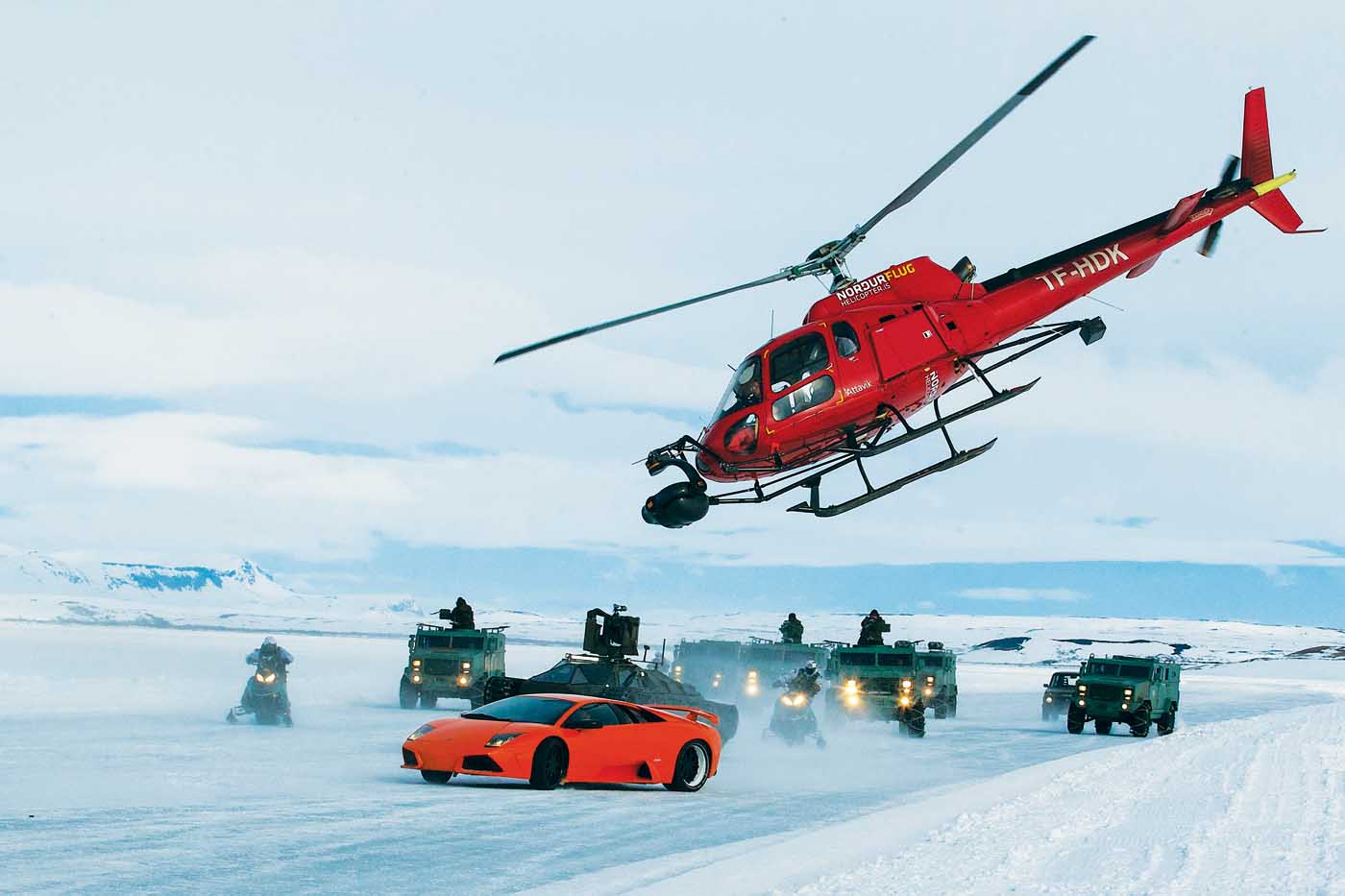
North rarely comes solo to a movie set, instead bringing with him a trusted team organized through the aerial production company he co-owns, Team 5 Aerial Systems. He often flies his own AStar on the job, although he leases local helicopters when and where it makes sense. Team 5 also supplies its own cameras — which include five Shotover K1 and two F1 models — and a variety of ancillary equipment, such as searchlights for special visual effects.
“I like to bring a package to a production,” North said. “We spend a lot of money to keep our equipment state-of-the-art.” Here, too, North is constantly innovating, as through the development of a custom rig that allows him to fly a Shotover at the end of a long line.
“We’re trying to find new ways to get the shot — we don’t just cruise,” he said. “I’m always thinking, how do I do this to put it on my demo reel?”
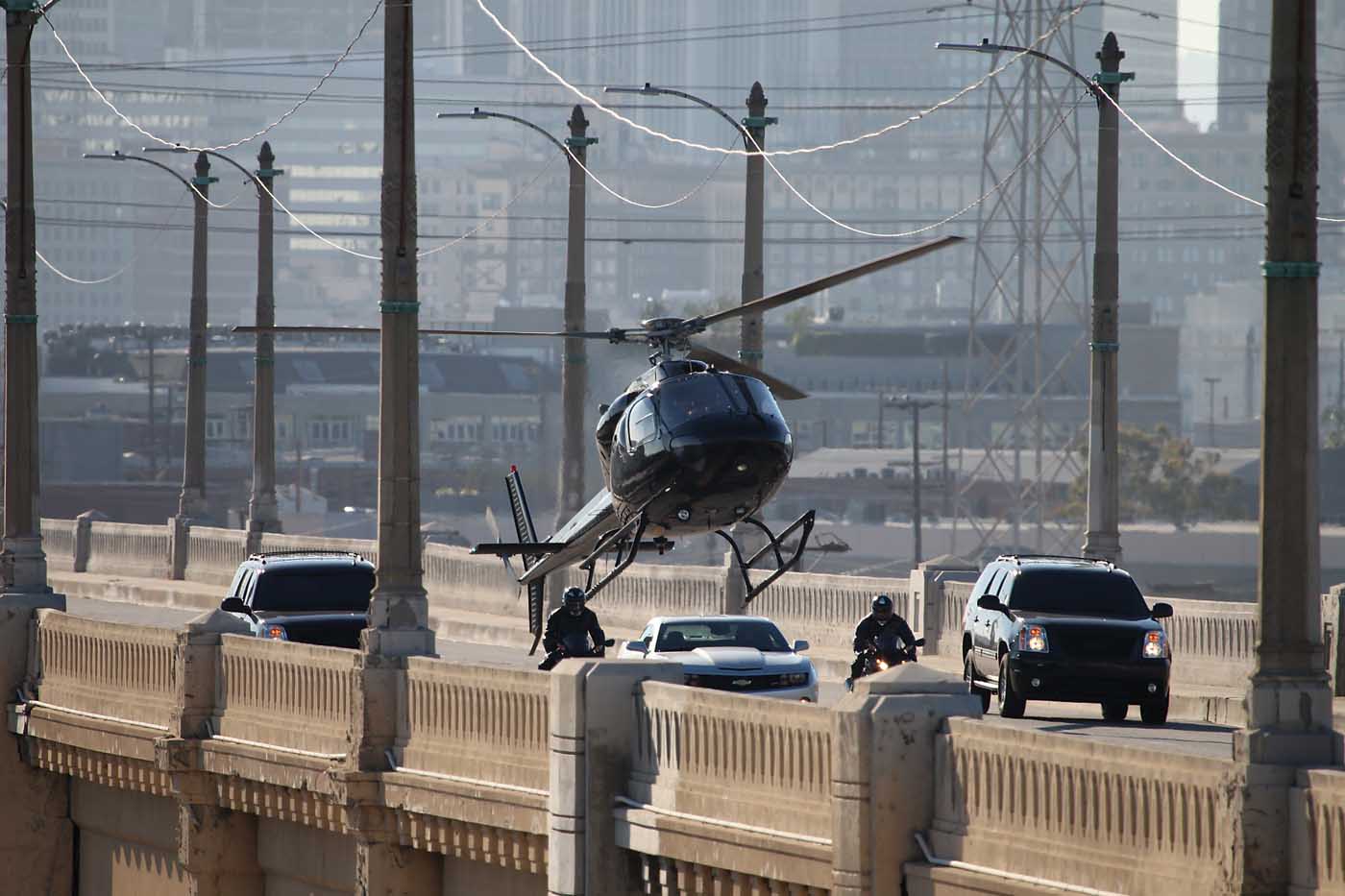
One question that North hears frequently is whether drones will eventually replace him. He’s not too worried about it. While drones have become a fixture on movie sets — including Bad Boys For Life, where a drone was flying alongside the camera and “picture” ships — it becomes obvious in that context that drones serve a radically different purpose.
Drones are good for simple storytelling shots, which used to be filmed from helicopters because no cost-effective alternative existed. But camera drones have limited endurance and depth of field, and drone operators on the ground don’t have the comprehensive situational awareness that is required for the most dynamic action shots, North explained. The real magic of the helicopter is in its ability to put a cinematic artist in the air, right in the middle of the scene. If drones had come first, helicopters would have had to be invented for just that purpose.
“A lot of people are using drones, but they cannot replace a helicopter,” said Razatos. “A helicopter has the speed; has someone like Fred who knows filmmaking. If you have someone on the joystick down below, he’s not up there, he’s not seeing it, he’s not feeling it directly. The camera can do so much more in the helicopter.”
